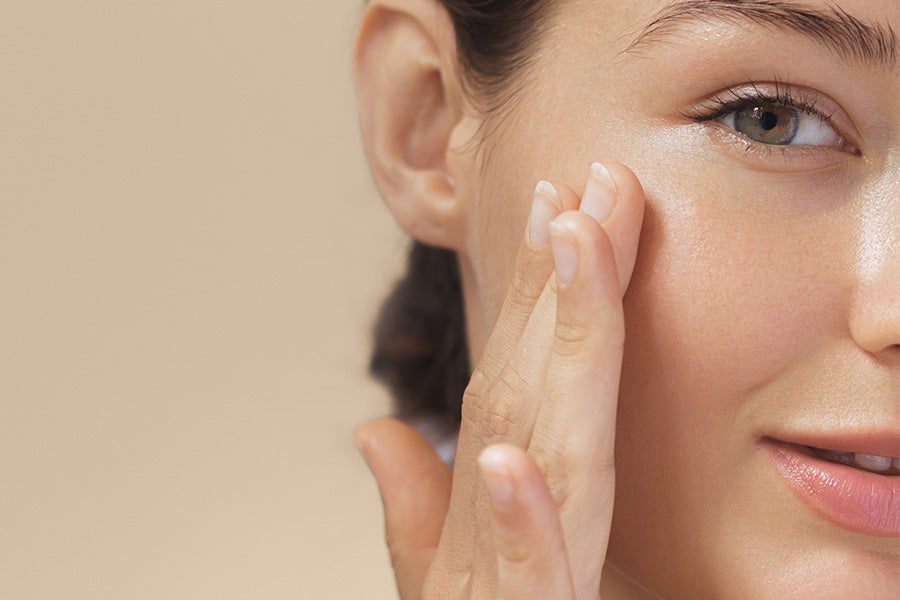AHA vs BHA Acids: A Guide to Different Types of Acids

In skincare, acids are key players in achieving smoother, clearer, and more radiant skin. However, not all acids are created equal. You're not alone if you’ve ever felt confused by terms like AHA, BHA, and glycolic acid. Understanding the different types of acids and how they work for your skin can help you tailor your routine for maximum results.
In this guide, we’ll dive into the differences between AHAs and BHAs, how they work, and which acid is best for your unique skin type and concerns.
What Are Skincare Acids?
Acids in skincare refer to active ingredients that chemically exfoliate the skin. They break down the bonds between dead skin cells, allowing them to shed more quickly. This reveals the fresher, younger-looking skin underneath and helps improve texture, reduce fine lines, and treat issues like acne, hyperpigmentation, and dullness.
Skincare has many types of acids, but the two most popular categories are AHAs (Alpha Hydroxy Acids) and BHAs (Beta Hydroxy Acids).
AHA (Alpha Hydroxy Acid)
AHAs are water-soluble acids derived from natural substances like fruits and milk. They are known for exfoliating the skin's surface, making them ideal for those who want a smoother texture, reduced pigmentation, and an even skin tone.
Types of AHAs:
- Glycolic Acid: One of the most common AHAs, glycolic acid is derived from sugar cane. Its small molecular size allows it to penetrate deeply, making it very effective for exfoliation. It helps brighten the skin, smooth fine lines, and improve overall texture.
- Lactic Acid: Derived from milk, lactic acid is a gentler AHA, making it great for sensitive skin. It hydrates while exfoliating and helps with pigmentation and fine lines.
- Mandelic Acid: This AHA comes from bitter almonds and has a larger molecular size, making it gentler on the skin. It's often used in treatments for acne and hyperpigmentation, and it’s less likely to cause irritation.
- Improved Skin Texture: AHAs exfoliate the top layer of skin, leading to a smoother surface.
- Brightening: Regular use of AHAs can result in more radiant, even-toned skin.
- Fine Lines and Wrinkles: Over time, AHAs stimulate collagen production, reducing the appearance of fine lines.
- Hydration: Some AHAs, like lactic acid, help boost skin hydration.
Best For:
- Dry or Dehydrated Skin: AHAs help remove dry, flaky patches and promote skin renewal.
- Dull or Uneven Complexion: If you have pigmentation issues, an AHA can help brighten and even out your skin tone.
- Aging Skin: AHAs are excellent for reducing the appearance of fine lines and wrinkles.
BHA (Beta Hydroxy Acid)
BHAs are oil-soluble acids that penetrate deep into the pores. The most common BHA is Salicylic Acid, which is often used in products designed for acne-prone or oily skin. Because it can break down oil and exfoliate inside the pores, BHAs are fantastic for clearing out congestion, blackheads, and whiteheads.
Common BHA Acids Found in Skincare:
- Salicylic Acid: The most well-known BHA, derived from willow bark. It penetrates deep into pores to break down oil and exfoliate, making it ideal for acne-prone skin.
- Betaine Salicylate: This gentler alternative to salicylic acid is often used in Korean skincare. It provides similar pore-clearing benefits but less irritation, making it suitable for sensitive skin.
- Tropic Acid: A lesser-known BHA that offers mild exfoliation, often included in products designed for oily or acne-prone skin.
These BHA acids effectively target clogged pores, reduce oil production, and treat acne.
- Pore-Clearing: BHAs exfoliate inside the pores, making them practical for treating acne, blackheads, and whiteheads.
- Oil Control: BHAs help regulate oil production, making them ideal for those with oily or combination skin.
- Anti-Inflammatory: Salicylic acid is known for its anti-inflammatory properties, which help reduce redness and irritation.
- Fighting Acne: BHAs are particularly effective for targeting acne because they can break down the oils that clog pores.
Best For:
- Oily or Acne-Prone Skin: BHAs are ideal for clearing excess oil and keeping pores clean.
- Congested Pores: If you struggle with blackheads or whiteheads, a BHA can help to decongest your skin.
- Sensitive, Acne-Prone Skin: BHAs tend to be less irritating than some AHAs, making them a better option for those with sensitive yet acne-prone skin.
AHA vs. BHA: Which One is Right for You?
Now that we’ve covered the basics of AHAs and BHAs, how do you decide which is suitable for your skin?
Choose AHAs If:
- You have dry, flaky, or sun-damaged skin.
- Your main concerns are dullness, pigmentation, or fine lines.
- You want to brighten and smooth the surface of your skin.
Choose BHAs If:
- You have oily or acne-prone skin.
- Your main concerns are clogged pores, blackheads, or breakouts.
- You want to reduce oil production and decongest your skin.
Can You Use AHA and BHA Together?
Yes, you can! Combining AHAs and BHAs can offer comprehensive exfoliation for all skin types. However, it’s essential to introduce them gradually to avoid irritation. Start using each acid on alternate days, and always follow up with a moisturizer and SPF to protect your skin.
How to Safely Use Acids in Your Skincare Routine
Using acids effectively requires care. Here are some essential tips to follow:
- Patch Test: Always do a patch test when introducing a new acid to ensure your skin doesn’t react.
- Start Slow: Use acids once or twice weekly, then gradually increase frequency as your skin builds tolerance.
- Don’t Mix Too Many Acids: Stick to one or two types of acids in your routine to avoid over-exfoliation and irritation.
- Always Wear Sunscreen: Acids can make your skin more sensitive to the sun, so wearing SPF is essential to prevent damage and protect your skin.
Understanding Your Skin’s Needs
Both AHAs and BHAs offer powerful exfoliating benefits, but choosing the right one is key based on your skin type and concerns. Whether you're dealing with dullness, acne, or uneven texture, an acid can help transform your skin. And don’t forget patience and consistency are crucial for seeing acid results.
Try products like our Oasis Spot Treatment for targeted care or our Agave Clean Cleanser for lifting away impurities and unclogging pores for personalized skincare recommendations. Discover how acids can fit into your routine and reveal your best skin yet!





